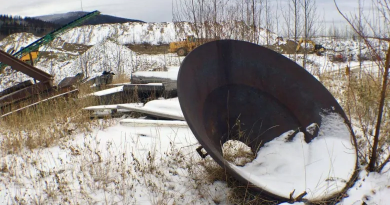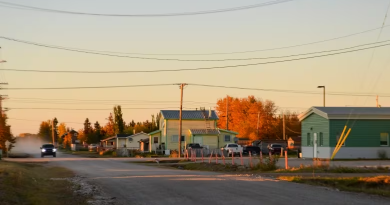Grieving Nunavut families shocked after funeral service sends wrong bodies for burial

Two grieving Nunavut families say they were shocked to learn they’d been given the wrong bodies of relatives to bury — after the funeral service and burial for one had already happened.
Jukeepa Veevee and her family laid her sister, Jeannie Alivaktak, to rest in Pangnirtung last Thursday. The family had decided not to view the body before the burial, so they didn’t know there had been a terrible mistake.
The next day, they learned the person they had buried was Annie Nattaq, from Iqaluit.
“It was very heavy to hear such a thing,” Veevee told CBC in Inuktitut. “At the same time, it must have been upsetting for the other family.”

This is the second time Veevee’s family has been dealt a shocking blow while trying to bury a loved one.
Last October, just before the funeral service for her son Terence, she was horrified to find him still in a body bag, despite having left clothes for Qikiqtani Funeral Services to dress him in. She and a church reverend had to hurriedly try to dress him themselves before family and friends arrived for the service.
This time, her late sister’s husband and children will have to go through a second funeral service.
“It was maddening,” she said. “It feels like they were being made fun of.”

The body of the woman they buried, Annie Nattaq, had to be exhumed and sent back to Iqaluit to her family.
Annie’s husband, Simon, said they discovered the mistake just before the funeral service, when one of their children went to put a keepsake in the casket.
Only then did they learn Annie had already been buried in another community.
“It was very painful,” Simon said in Inuktitut.
He told CBC News he’s speaking to the media so this kind of thing doesn’t happen again.
Crowded morgue
When people die in the hospital in Iqaluit, health care workers transfer them to the morgue along with a sticker that has their name, community and other information. Once at the morgue, the body is picked up by Qikiqtani Funeral Services.
Veevee said she spoke to the owner of Qikiqtani Funeral Services, Jake Gebara, and was told the morgue had been overcrowded at the time.
In an interview, Gebara said there were a lot of bodies at the hospital morgue when the mistake happened. There is supposed to be one bed per individual, but there were so many at the time that they were “bunched up together.”

He said he isn’t sure how the bodies got switched, but name tags and stickers can fall off, and may have fallen onto the wrong bodies.
“What can I say to the family? The damage has already been done. A great sadness has been put on them, and they’ve already had to deal with the sadness — and now they have to relive that event again, which is most upsetting to me,” he said.
He apologized to the families.
“I’m sorry to anybody who’s hurt over this. I am deeply, deeply, deeply upset, too,” he said.
Gebara said the funeral service is looking to modernize its systems to avoid any future mistakes. He added Iqaluit needs a proper funeral home — he shares his workspace with ambulance workers and janitors right now.
When asked for an explanation of the mistake, Nunavut’s health department said in an email that it’s the funeral service that is responsible for verifying the identity of deceased people and transporting the bodies back to their families.
It said it did a “thorough review” of its procedures and “verified that all processes were adhered to correctly.”
“Health can confirm that the appropriate identification, labelling and documentation was completed for both individuals,” the department wrote.
Written by April Hudson, with reporting by Salu Avva
Related stories from around the North:
Canada: Infant mortality rate in Canada’s Nunavut three times national average: report, CBC News
Finland: Finland’s elder care needs funding boost to meet Nordic standards: researcher, Yle News
Sweden: Giving birth in a car: a real rural problem in Sweden, Radio Sweden



